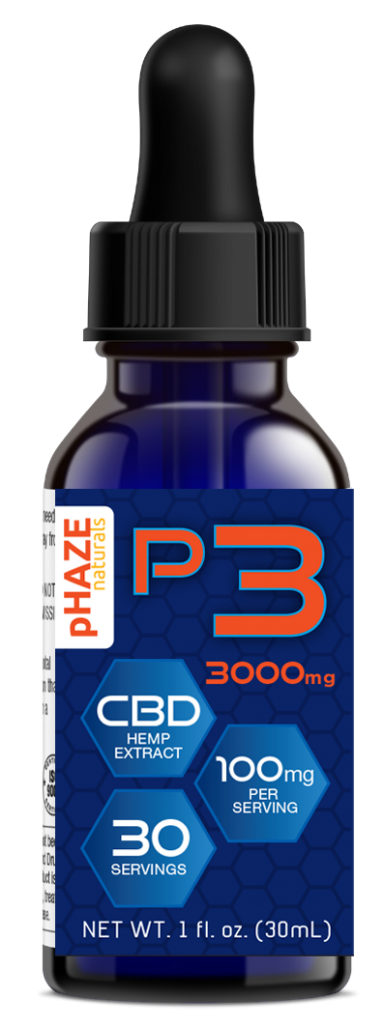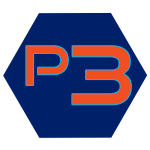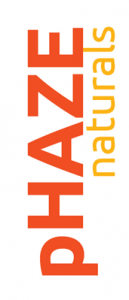All-Inclusive CBD Buyers Guide
Your All-Inclusive CBD Buyers Guide
Evidence of cannabis use first appears in Chinese medicinal texts starting around 2900 B.C.E. Like today’s CBD oil products, the Ancient Chinese used cannabis plants that contained less THC (the chemical that makes you feel high), such as hemp. Today’s CBD oils come from industrial hemp plants related to the same plants used by the Chinese centuries ago.
Despite centuries of use, people are reluctant to consider CBD products because of THC’s negative reputation. A myth, among many others that we will clarify in our All Inclusive CBD Buyers Guide.
When it comes to buying CBD oil products, there can be many concerns and misconceptions surrounding the uses and benefits of CBD oil. To clarify any confusion, we’ve created a Buyer’s Guide to CBD products. Whether you’re new to CBD or been using CBD oil for years, we think this guide will help you learn more about the benefits of CBD and what to look for and who to trust when it comes to buying your CBD products.
What is CBD?
CBD (Cannabidiol) is a compound that occurs naturally in the Cannabis Sativa plant. You’ll find CBD among around 100 other chemical compounds called cannabinoids in the thick sappy resin found in the plant’s flowers. One other commonly known cannabinoid found in variations of the Cannabis plant is Tetrahydrocannabinol (THC, you know the stuff).
CBD vs. THC
Today, farmers and scientists continue the work of our Ancient ancestors to develop strains of the Cannabis L Sativa plant that contains little to no THC (the stuff that makes you feel high). This industrial hemp plant is grown in the United States and used to create CBD products such as our pHAZE Naturals oils and tinctures.
To keep it simple, CBD comes from a variety of Cannabis, which contains little to no THC (less than 0.3% THC content).
The plants that give us CBD and the plants that provide us THC are related, but people have cultivated them for different purposes. Some believe that what we know as industrial hemp is one of the first plants grown by agricultural humans.
Hemp is one of the strongest natural fibers. We will talk about the health uses and benefits of CBD from industrial hemp in a second, but you might find some of its other applications interesting.
Hemp is used in:
- Textiles: Clothing, shoes, fabric, and even diapers.
- Building materials: Fiberboard, insulation, and ink, rope, canvas, tarps, carpeting, and netting.
- Paper: cardboard, packaging, and printing paper
- Food/Nutrition: Hemp seeds, hemp seed oil, and hemp protein powders
- Body Care: CBD products, soaps, shampoos, and lotions.
Hemp has over 50,000 practical uses!
If the plant is so useful, then why is it so controversial?
The answer to that question is complicated, but it has to do in part with the other common cannabinoid found in cannabis plants and the controversial (sometimes a bit racist) history behind THC, commonly referred to as marijuana.
THC
THC is the cannabinoid found in varieties of Cannabis that gives you the psychoactive effects. In other words, THC is the chemical that gives you a “high” feeling. THC also comes from cannabis plants. You find THC in cannabis plant varieties that contain more THC and often less CBD.
Don’t forget these are not the only two cannabinoids found in cannabis plants. These are just the two most popular and often controversial.
The legality of these two chemicals is where things get interesting.
CBD is legal at the federal level. While that’s excellent for everyone involved in the CBD industry from growers and developers to distributors and investors, CBD is still illegal in some states.
To complicate things further, THC is illegal at a federal level, but now legal in over half of the states for medicinal or recreational purposes, or both in some states.
The two (both THC and CBD) are often confused with one another, AND they are confused by the very people making these laws.
The confusion and controversy around CBD are why we want to stop the spread of misinformation around CBD’s uses and benefits.
To Recap:
CBD and THC are chemicals found in the Cannabis sativa plant. Some varieties contain more THC than others. Industrial hemp is a variety of Cannabis grown in the US that contains less than 0.3% THC but contains plenty of CBD.
We are talking about components found in plants belonging to the same family. Both THC and CBD have potent therapeutic benefits.
Many people don’t want the psychoactive effects of THC, which is why people have rediscovered the therapeutic and non-psychoactive effects of CBD.
CBD boasts similar physical and mental health benefits as THC without leaving you feeling high or intoxicated.
CBD works so well for many ailments because our bodies seem to work in concert with cannabinoids. Scientists recently discovered part of our nervous systems called the Endocannabinoid System.
Endocannabinoid System
The Endocannabinoid system is the key to how CBD works in the body. Neuroscientists (the brain docs) believe that CBD interacts with receptors in our central nervous system (where pain receptors and seizures and anxiety/depression originate in the body).
Our bodies have a system called the Endocannabinoid system. Our bodies produce endocannabinoids (neurochemicals) that interact with cannabinoids and receptor proteins in our brains. This system helps regulate your sleep, appetite, pain responses, immune response, and stress responses.
Our bodies naturally produce endocannabinoids to interact with our nervous system and keep our bodies in balance. CBD and other plant-derived cannabinoids mimic these endocannabinoids produced in our bodies and help keep our system balanced and functioning properly.
Cannabinoids like CBD work by interacting with this system of neurotransmitters and receptors in our bodies.
Our bodies are made to interact with CBD products!
While the science behind the endocannabinoid system is still growing, there is strong evidence supporting CBD’s health benefits, and we’re now starting to understand why CBD is so helpful for so many things.
It’s all about balancing our systems.
Is CBD the same as hemp oil?
The short answer is no.
Hemp oil is extracted from the hemp seeds. Hemp seed oil contains no CBD. CBD is not found in the stalks, stems, roots, or seeds of the hemp plant. Hemp oil is nutritious and full of Omega-3 fatty acids but doesn’t have the same therapeutic benefits of CBD oil extracted from the flowers of the industrial hemp plant.
What are the Benefits of CBD?
Despite being found in ancient texts as a medical intervention for physical and mental ailments, CBD hasn’t been around or commercially available for very long.
Because CBD is tied so closely to its cousin, THC, there is a long history of doubt and misinformation surrounding CBD’s benefits and uses.
Science is just starting to catch up.
There is a growing body of evidence showing that CBD can impact physical and mental health in many ways. The science continues to grow in support of CBD, and we look forward to keeping you up-to-date on the science of CBD!
Mental Health Benefits of CBD:
Studies indicate that CBD can have a positive impact on those suffering from anxiety and depression. We know that CBD interacts with our central nervous system. It makes sense the CBD can have practical uses for helping relieve mental health struggles that originate in our nervous systems.
One study showed that just a 300mg dose of CBD oil helped participants with social anxiety when set up to participate in a simulated public speaking engagement.
CBD can help with:
- Anxiety: Studies show the benefits of CBD for anxiety, including social anxiety and even childhood anxiety from PTSD syndrome. Dosage of around 300mg proved to be the most effective for the treatment of anxiety in one study.
- Depression: Like anxiety, depression originates in our nervous system. CBD can help balance neurochemicals that promote feelings of positivity and happiness.
- Epilepsy: Some CBD based pharmaceutical products are FDA approved to treat certain seizure disorders
- Insomnia: In patients using CBD for sleep disorders, studies have indicated that CBD can help induce sleep.
Physical Health Benefits of CBD
The way CBD interacts with our nervous system impacts our pain receptors, and the way we experience pain. CBD also has shown to have some ability to decrease inflammation, which is another source of physical pain.
CBD Can help with:
- Muscle and Joint Pain: CBD for pain is likely a result of both CBD’s anti-inflammatory effects and its ability to interact with our pain receptors in our central nervous system.
- Inflammation
- Cancer treatment symptoms/side effects
- Reduce acne
- Reduce Blood pressure
CBD and COVID:
While we can’t claim any CBD benefits in treating the symptoms of COVID-19 (it’s much too soon for that), we do know there is a lot of stress and anxiety experienced by people living through a global pandemic. CBD helps to promote feelings of calmness, and we could all use a little more calm while we live through a worldwide epidemic!
CBD Side Effects
While not common, CBD can have some adverse side effects for some people. One of the most common side effects is changes in appetite and fatigue while your body gets used to CBD.
CBD can help lower your blood pressure, specifically through reducing stress and anxiety. If you already experience low blood pressure, you can experience drops in blood pressure while using CBD.
CBD can interact with certain medications. If you take a medication that contains a grapefruit warning (yes, grapefruit), you may also experience similar effects while taking CBD. CBD and grapefruit may interact with the way your body metabolizes certain medications.
Ways to Take CBD
There are many ways to take CBD, and some have more reliable dosing than others.
Oils and Tinctures:
Oils and tinctures are one of the most common ways people take CBD products. We recommend that you take oils and tinctures under the tongue (sublingual). You have many little blood vessels under your tongue, and the CBD gets absorbed right into those blood vessels. The CBD gets into your system, and you start feeling the benefits much sooner when taken under your tongue.
Our tinctures have a serving size of 1ml or about 1/4 of a teaspoon and come in three different pHAZES or strengths. The pHAZE you choose depends on why you’re taking CBD products, and we’ll talk more on that later.
We sweeten our CBD products with stevia and vanilla, so don’t worry if a drop or two gets on your tongue. It’s delicious!
Oils and tinctures should be labeled with CBD content information. If your bottle doesn’t have a strong label with detailed information, it’s probably not high-quality CBD.

Creams and Lotions:
While CBD oils and tinctures interact with our pain receptors when taken orally, CBD creams and lotions also have pain-relieving effects when used topically. CBD topicals such as creams and lotions can help soothe muscle and joint pain while also relieving some inflammatory skin conditions such as eczema.
Capsules and Pills:
For those with sensory issues or difficulty taking CBD as an oil under the tongue, a capsule or pill is another option. Powdered forms of CBD are found in capsules and used to treat seizure disorders and even digestive issues.
While we prefer (under the tongue) oils, capsules are another way you’ll find CBD products.
Edibles:
Gummies are another popular way to take CBD products. Gummies are portable and easy to dose, and they taste delicious. If you’re taking a road trip with friends and you don’t want them asking a lot of questions about your CBD drops, pack some CBD gummies instead.
Just be sure to keep them out of reach of children.
Vaping:
Inhaling vaporized CBD oil is another fast way to get your CBD quickly and discreetly. Your lungs absorb the CBD directly into your bloodstream.
If you don’t already vape, you may not want to pick up the habit, so we recommend you choose oils or tinctures at first.
How Much CBD to Take:
With any new health and wellness regiment, it’s important to stay in contact with your physician.
With that caveat out of the way, let’s talk about taking CBD.
Like most vitamins and nutritional supplements, CBD oils are not yet FDA approved, which means there are no concrete dosing guidelines available.
CBD dosing is up to the individual, and WHY you are taking CBD oils. While figuring out which dose is best for your body, it’s important to stay clued-in to how your body is reacting. pHAZE Naturals offers our products based on the amount of CBD per recommended serving size.

pHAZE 1
Contains up to 33mg of CBD per serving. It’s our lowest pHAZE of CBD, and it might be a perfect starting point for you. If your symptoms are mild and you want to give CBD a try for the first time, we recommend starting here.

pHAZE 2
Is the next up in dosing we offer, and it contains between 34 mg and 99 mg of CBD per serving. For more chronic pain or stronger symptoms of anxiety, this might be a good place for you.

pHAZE 3
pHAZE 3 is our highest concentration CBD oil with 100 mg or more per serving. For those suffering from intense symptoms of depression or anxiety, or going through cancer treatment, you may want to work your way up to our most potent CBD pHAZE.
Is CBD Legal?
Industrial hemp and CBD are legal at the federal level while it is still illegal in some states. Our CBD products come from legally grown Colorado hemp processed by an ISO certified 9001 and FDA registered facility.
Where is CBD Grown?
Given the vast difference in growing standards and product quality standards, we recommend that you look for products grown and processed in the United States.
ISO 9001 certified means a facility has to pass stringent requirements proving that monitoring and measuring equipment meets high standards and that facility managers meet minimum skills and experience qualifications. An ISO 9001 certified facility provides more top quality and consistent quality products.
FDA Registered means that the facility produces products that contain exactly what they say they contain. Our products are from an FDA registered facility, meaning if we say it contains 30mg per serving, you can trust that to be true.
Where to Buy CBD Products?
Suppose you feel comfortable trusting your local coffee shop selling CBD enhanced baked goods, or your weekend farmers market with minimally labeled products. In that case, we wish you good luck in supporting your local entrepreneurs looking to get in on the CBD industry’s ground floor.
If you want high-quality products that are correctly labeled and products you can trust, we’ve made it easy to purchase our pHAZE CBD oils right online.
What Information to Look for on the Label?
Look for products that:
- Are made in the USA
- ISO 9001 Certified
- Have clearly labeled ingredients list
- Include dosage per serving
- Include directions on how to take the CBD product
- Include storage directions
- Include an address and phone number, website, and other contact information of the distributor.
Product labels that don’t include all of this information are probably not from ISO 9001 certified facilities with adequate quality and control.
We hope this helps clear up the confusion surrounding CBD oil and its close relative, THC. If you’re looking for a natural product that can help with chronic pain, reduce stress and anxiety, and even relieve the symptoms of cancer treatment, check out our three different pHAZES of CBD to see which one might work best with your particular circumstances.
